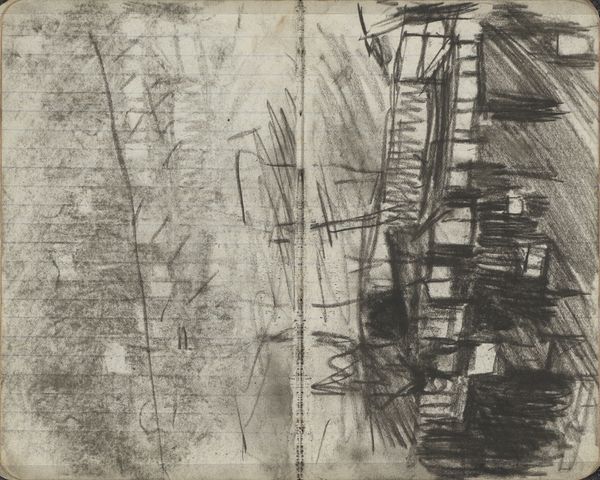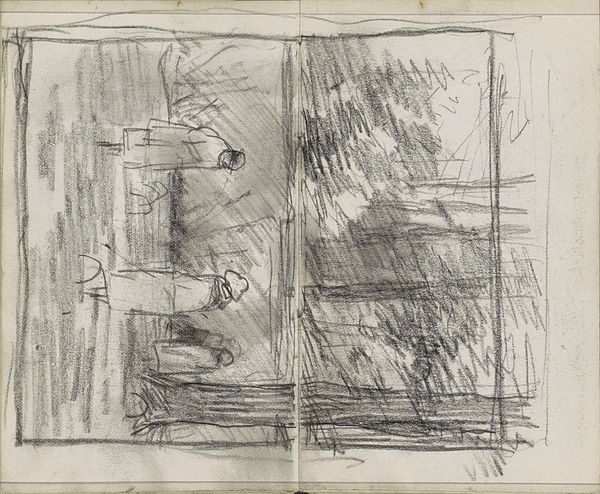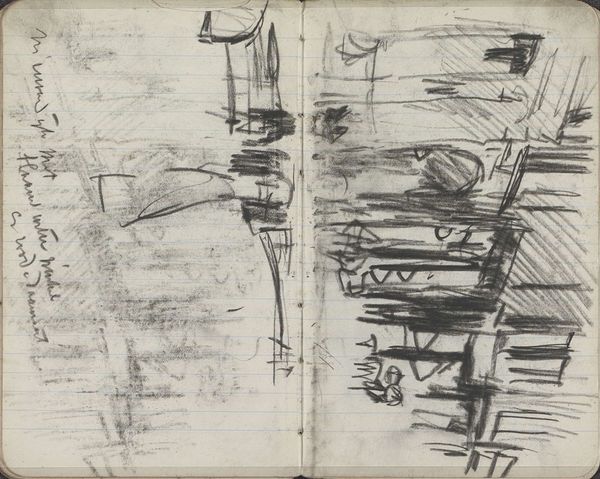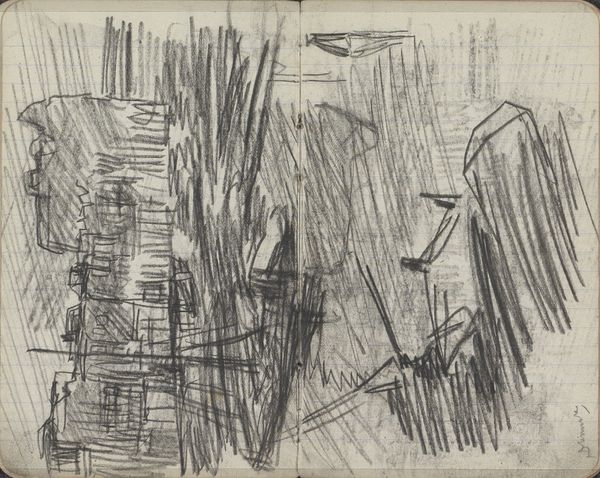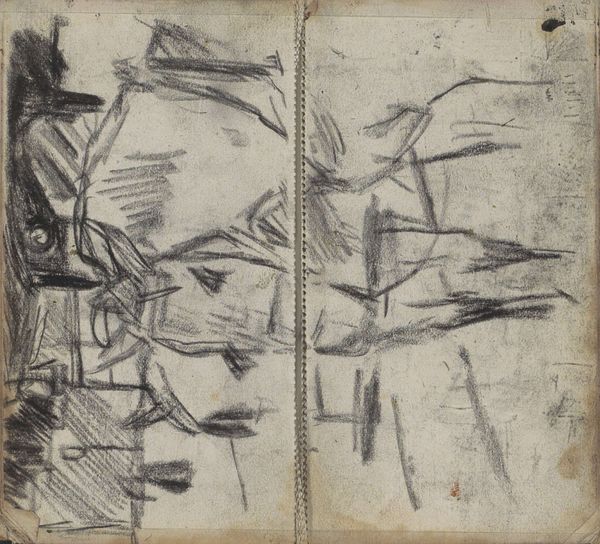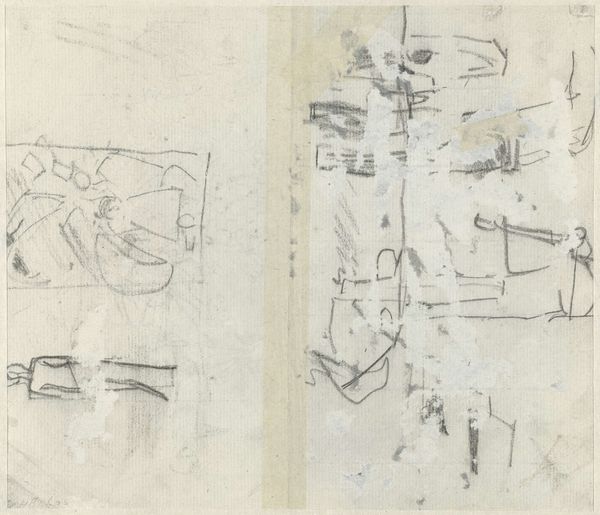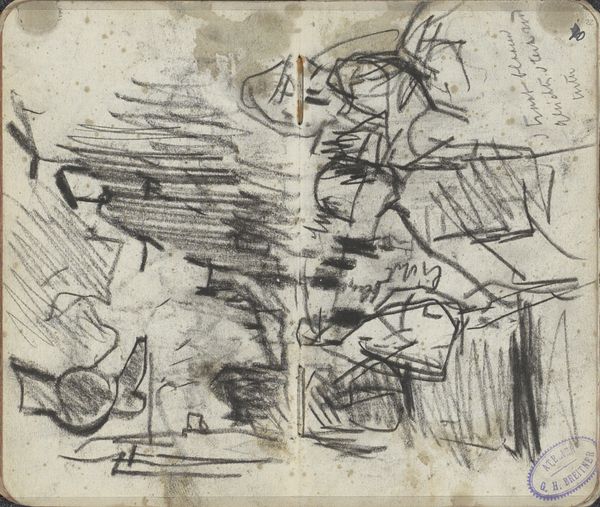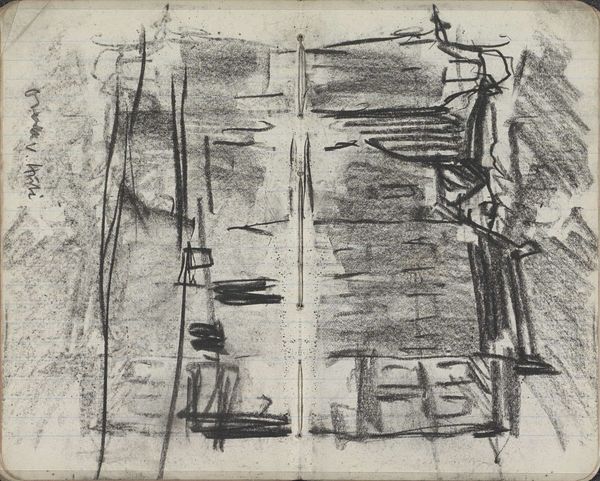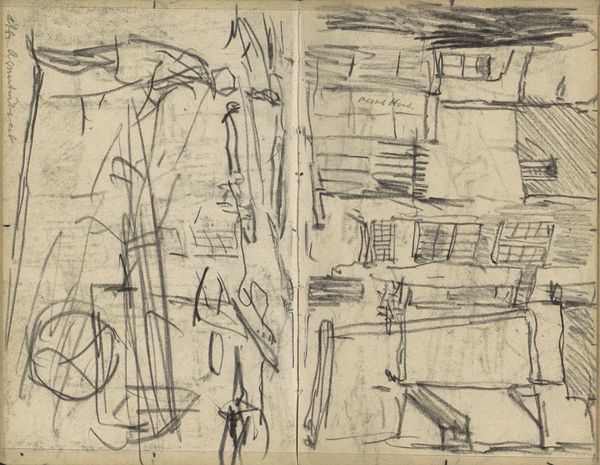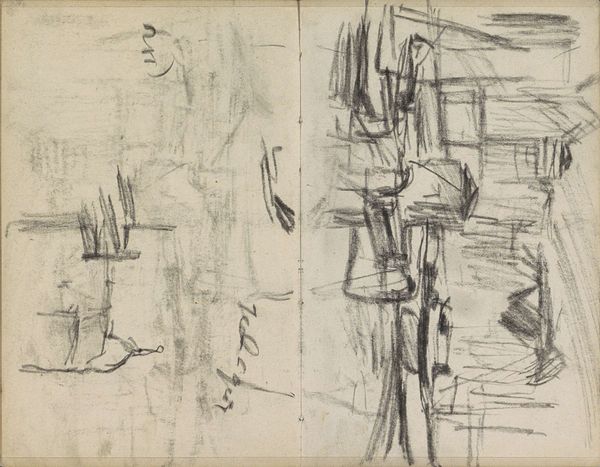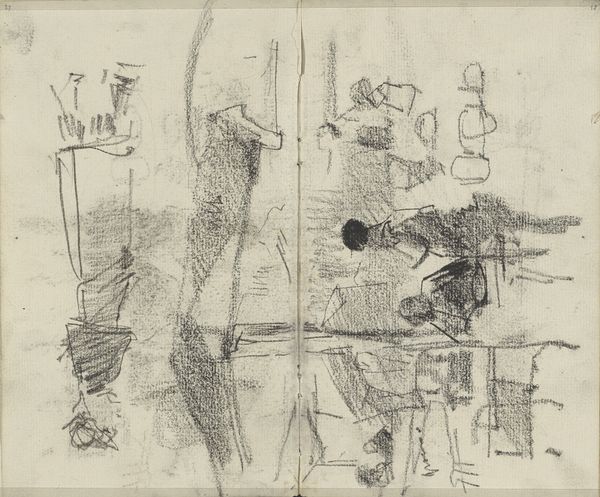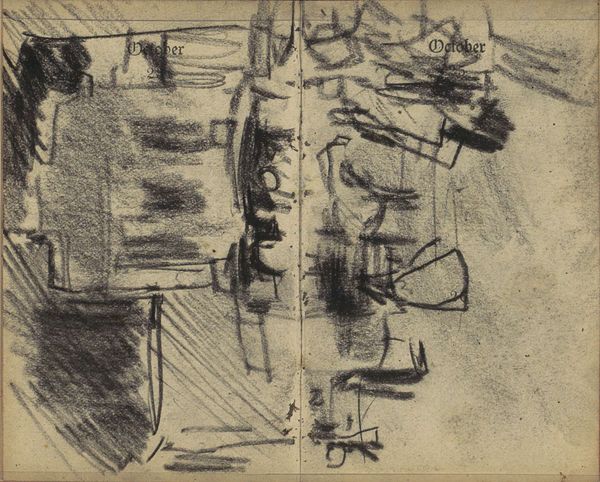
Copyright: Rijks Museum: Open Domain
Curator: This graphite and ink drawing on paper is titled "Gezicht op de Oude Waal te Amsterdam," or "View of the Old Waal in Amsterdam," created by George Hendrik Breitner sometime between 1890 and 1900. Editor: Immediately, it strikes me as a fleeting, almost anxious sketch. It’s like a half-remembered dream of a cityscape, dark and smudged. Curator: Breitner was known for capturing the pulse of Amsterdam, the gritty reality beyond the picture postcards. This drawing, likely from a sketchbook, offers a glimpse into his working process, that restless energy he channeled. We can imagine him quickly capturing this vista en plein air. Editor: Absolutely, and that rawness is what’s so compelling. There's no attempt to pretty things up, no romanticized view. It’s a straightforward observation— the linear precision of the buildings set off against this flurry of smudged shading that's almost violently gestural. What do you suppose it was about this particular view that snared his attention? Curator: Considering Breitner’s broader body of work, the hustle and bustle of city life clearly captivated him. This vantage point offered him the industrial waterside, capturing both the architectural structure of the buildings and that vibrant reflection shimmering on the water. It’s the essence of modern Amsterdam during a period of rapid change, as experienced from a gritty, ground-level view. The rapid marks suggest transience. Editor: True. It reminds us how much art is shaped not just by talent, but also by location, and by access. Think about who got to depict Amsterdam at this moment, and whose perspectives are highlighted, and preserved in a place like the Rijksmuseum today. But let's step back... In these broad strokes and furious lines I detect a somber atmosphere that hints at the deeper questions art allows us to ask about what defines us, how we evolve. What are your thoughts as you study the work? Curator: It allows me, in essence, a direct point of access, this feeling of temporal space where, as you suggest, both past and future possibilities reside. Breitner, in this evocative and visceral scene, seems to understand exactly that. Editor: So beautifully put, a somber mirror—reflecting time.
Comments
No comments
Be the first to comment and join the conversation on the ultimate creative platform.
